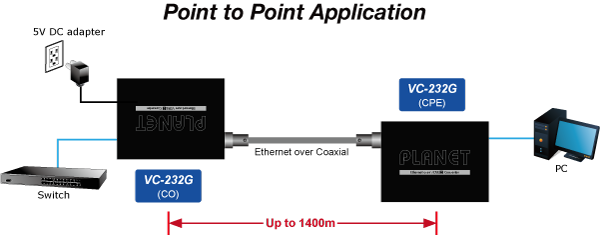

Furthermore, hiring a professional crew to oversee the installation of your cabling can be very expensive. Unless you have a decent amount of skill, patience and time, laying your own Ethernet cable may not be possible. If you have coax cable already installed, 90% of your work is done

By using a cox to Ethernet adapter, you can significantly boost your network’s performance and prevent issues like lagging and buffering. MoCA frequencies are capable of working at frequencies over 1GHz, which is often greater than signals used by both ISPs as well as TV stations from cable providers. Because many modern homes already have coax cable installed in almost every room, the pathway for faster and more reliable internet connections is already in place. MoCA and how it can transform your home networkįor those who are unfamiliar with MoCA, it stands for Multimedia over Coax Alliance which is an IP-over-coaxial cable technology. However, the vast majority of other routers will need to have coax to Ethernet adapters installed, specifically one for each wired internet connection you create. If you already have FiOS service and a suitable router, likely, your router is already MoCA-capable. For example, your router must either already possess MoCA capabilities or be able to use such an adapter in the first place. Though it would be wonderful for adapters to provide enhancements for your existing wired network with no effort, there are some important things to keep in mind. What to know before you buy a coax to Ethernet adapter You need to have a MoCA-capable router or a compliant adapter With adapters like the Motorola MoCA Adapter for Ethernet Over Coax 1,000Mbps (Model MM1000) helping to boost your network, you can enjoy fast internet anywhere in your house that coax cable can reach. You can use the remote as normal to control the television.Which coax to Ethernet adapters are best?Īre you sick of dealing with Wi-Fi dead zones in your home but can’t afford to have Ethernet cables professionally installed? Fortunately, there is a handy little device that will let you boost your home internet connectivity using the pre-existing coaxial cable.

Typical placement is near the IR receiver of the cable box.
CONVERT CABLE TV TO ETHERNET INSTALL
Install the IR extender to the wireless transmitter and then place the receiver in an open area. This boosts the IR sensitivity so that you do not have to worry about furniture or walls blocking the signal. If the television is in a different room and the cable outlet or box in another, install an IR remote extender so that you can use the standard remote. After initial installation and turning on the television, make minor adjustments to the receiver until you obtain the clearest picture. When first installing the system, point the paddles toward one another. You may need to adjust the paddles on occasion to get a clearer signal. The transmitter and receiver each have a paddle or antenna that allows the two devices to communicate with each other. If you connect the receiver using an HDMI cable, tune the television to the appropriate HDMI input. If you use a coaxial connection, tune the television to the channel selected on the devices. From the input menu on the screen, select the one that you connected the receiver to. When connecting an external device to a television, like a DVD player, VCR, or cable box, always plug them into the proper inputs.

Power the device on and select the channel output that matches the channel you selected on the transmitter. Connect the AC adapter to the receiver and plug it into an outlet. Choose a longer cable to conceal the receiver inside an entertainment system.Ĭonnect one end of the cable to the receiver and the other end to the appropriate HDMI or coaxial port on the television. Choose a short cable so that it is easy to conceal the receiver behind the television. The wireless receiver connects directly to the television using either an HDMI cable or a coaxial cable. Power the device on and select the channel output.ģ - Connect the Wireless Receiver to the TV Connect the AC adapter to the transmitter and plug it into a standard outlet. If you are connecting it to a cable box, connect a line from the "RF OUT" connector on the cable box to the "RF IN" port on the transmitter. Connect the coaxial cable from the wall to the "RF IN" port on the transmitter. The wireless transmitter connects directly to the wall outlet or the cable box. 2 - Connect the Wireless Transmitter to the Cable Box


 0 kommentar(er)
0 kommentar(er)
